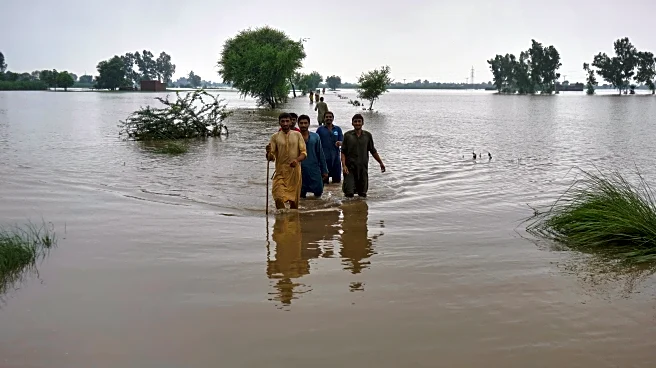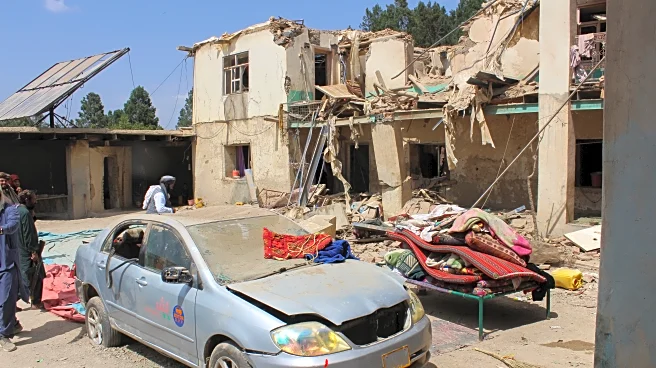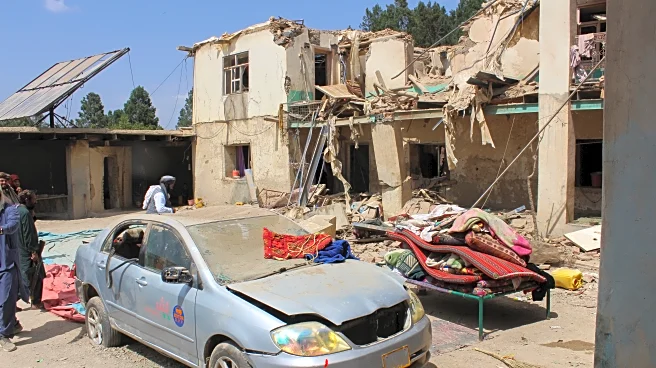What is the story about?
What's Happening?
A 6.0-magnitude earthquake struck Afghanistan's eastern region near the Pakistan border, according to the United States Geological Survey (USGS). The quake occurred 27km northeast of Jalalabad in Nangarhar Province at a depth of 8km. USGS models estimate the shaking could result in hundreds of fatalities. The earthquake was followed by aftershocks, including a 4.5-magnitude and a 5.2-magnitude tremor. An orange alert was issued by the USGS PAGER system, indicating significant casualties and widespread disaster potential. Local officials and residents are actively working on rescue efforts, with support teams from the capital and neighboring provinces en route.
Why It's Important?
The earthquake's impact is significant due to the potential for high casualties and extensive damage in a region already facing challenges. The USGS alert suggests a need for regional or national response, highlighting the vulnerability of Afghanistan's infrastructure to natural disasters. The event underscores the importance of disaster preparedness and response capabilities in areas prone to seismic activity. The potential human and economic losses could further strain Afghanistan's resources, affecting recovery efforts and international aid requirements.
What's Next?
Rescue operations are underway, with local officials and residents mobilizing resources to assist affected individuals. Support teams from the capital and nearby provinces are expected to arrive to aid in relief efforts. The situation may prompt international humanitarian assistance and increased focus on improving disaster response mechanisms in Afghanistan. Monitoring of aftershocks and assessment of damage will continue, influencing future infrastructure and policy decisions.
AI Generated Content
Do you find this article useful?















